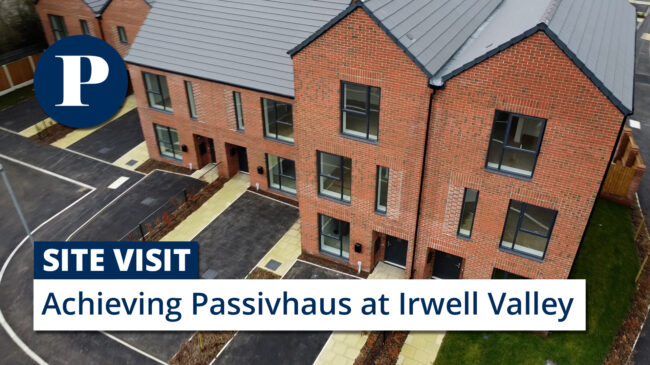NW in 2018 | Life for rent
The rise of the private rented sector and challenges for younger people to get onto the property ladder have been well documented in the media but as the way we live changes, how will this impact our ageing population? asks Liz Brown of Pozzoni Architecture.
Can architecture play a role in creating residential spaces that more realistically reflect our modern lives?
It’s increasingly common for today’s working population to rent their homes. Whether it’s because owning a home is financially out of reach or it’s simply a lifestyle choice to allow for greater flexibility, the private rental sector boom isn’t showing signs of slowing down.
Older generations often worry about the younger generations because of this social shift. In ‘their day’, owning a property was what people strived for. It provided stability, a place to raise a family, security in retirement and a pot of funding that could either be used for end of life care or to pass onto their children.
But it’s the rental market targeting the older generations where we expect to see the biggest changes within the next twelve months. Countries like Germany are known for their renting culture and it’s not just their working and family-raising years that they’re spending in rented accommodation; Europeans will rent during their retirement too.
It’s slowly becoming more popular for UK retirees to choose a rented home, to enjoy a different lifestyle during their golden years too, for example moving into a city centre apartment to enjoy the high life – possibly literally. Just because someone is older, it doesn’t necessarily mean that they want to move away from the vibrancy and amenities that our cities have to offer. As the race for residential space continues and the challenges of accommodating an ageing population increase, don’t be surprised to see more high-rise developments dedicated to over 55s.
Whatever the reasons for renting, whether it’s by choice or through necessity, one thing that will need to change is how end of life care is paid for. The current core funding system relies on equity in the family home but if that isn’t available, where do we go from there? As ‘generation rent’ gets older, and more people actively choose to rent during their retirement, the system will need to change to create a fair system for all. That’s where we expect to see more reliance on supportive communities and an increase in multi-generational living.
So, what can architects do to help this changing world? Designing homes that allow for inter-generational living and creating neighbourhoods with mixed communities will be key, so it might be time to look once again to Europe for inspiration. An innovative programme in the Netherlands allows students to live rent-free (or at a reduced rent) in a care scheme with elderly residents. In return, the students must commit to spend a minimum of 30 hours per week with the care home residents, reducing the financial burden on their care providers. So, is providing student residencies within a larger care village a way forward in the UK?
A radical scheme such as this may take longer to implement but, as architects, something that we should be looking to do now is designing apartments and houses that are flexible and can adapt to such changing needs i.e. Lifetime Homes standard, so people don’t have to move out of their homes as their circumstances change. Incorporating dementia friendly design to help people stay independent their homes for as long as possible will also be a trend we expect to see more of over the year ahead.
We need to seek out the opportunity to understand future trends in the housing market and demographics, to design homes that are flexible and adaptable, set within communities that allow for homes for life to be achieved and provide a more holistic society.
- Liz Brown is associate architect at Pozzoni Architecture
The North West in 2018 series features guest contributors looking ahead to next year and is published throughout December.




